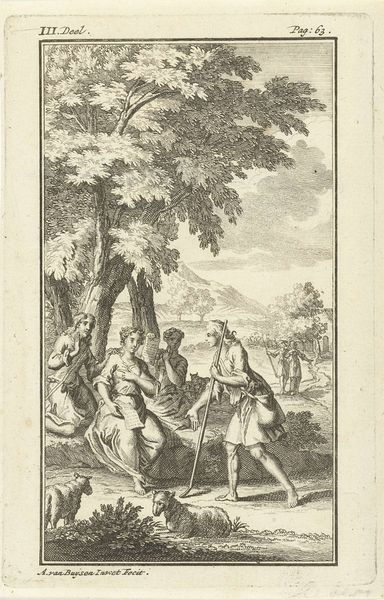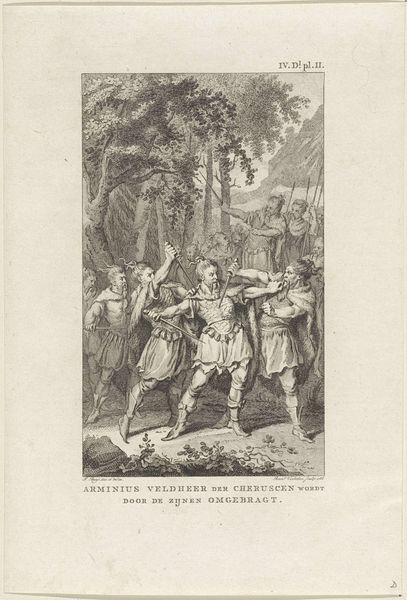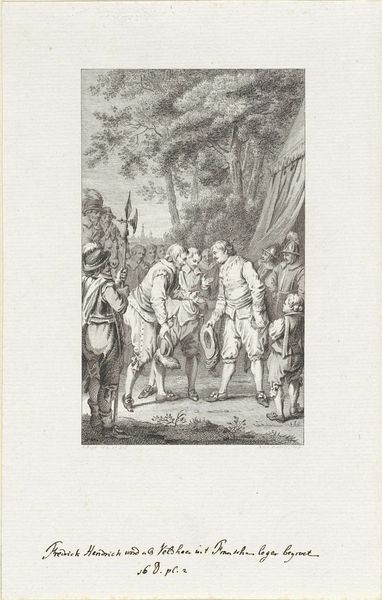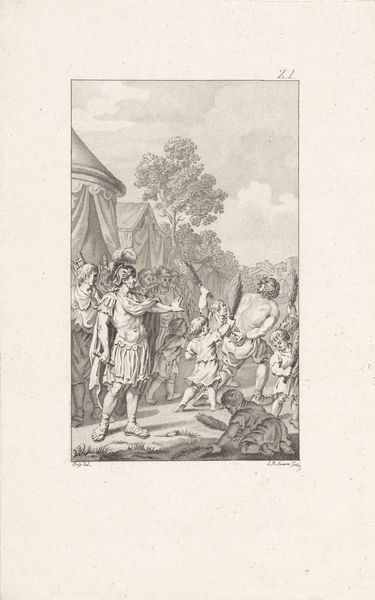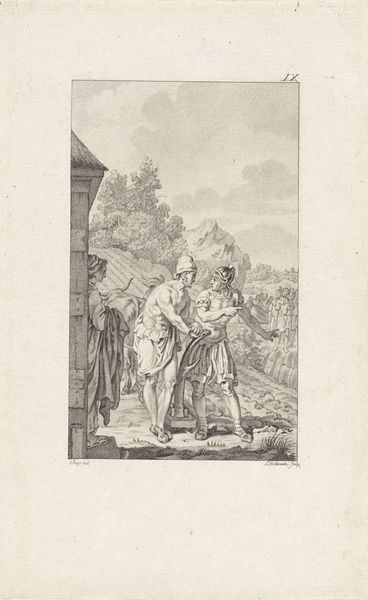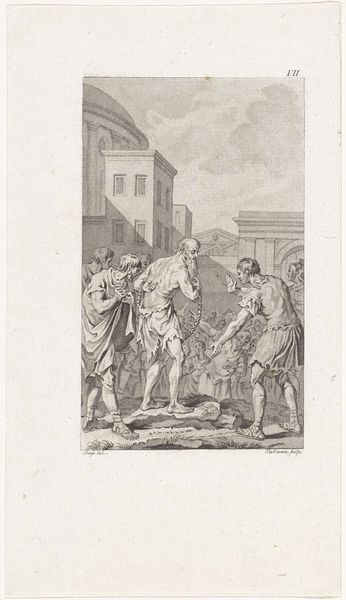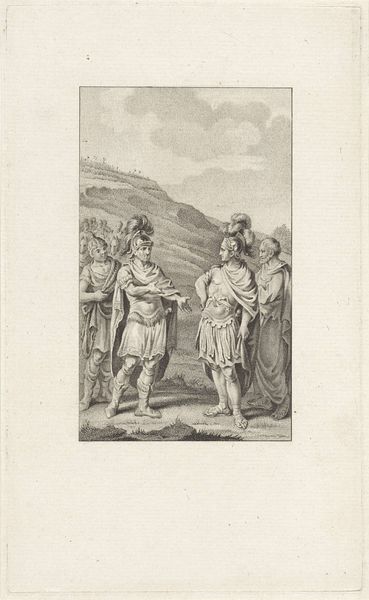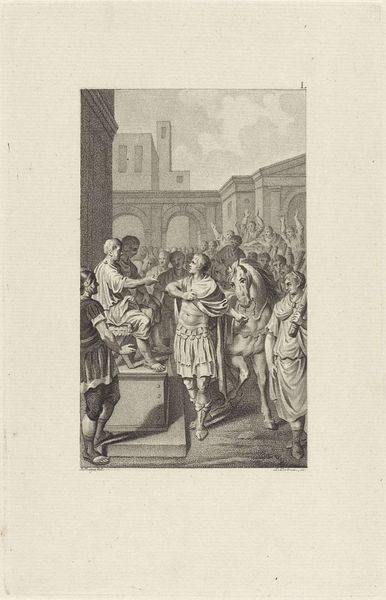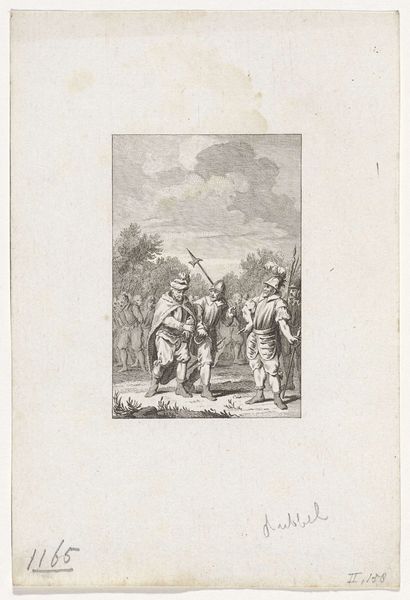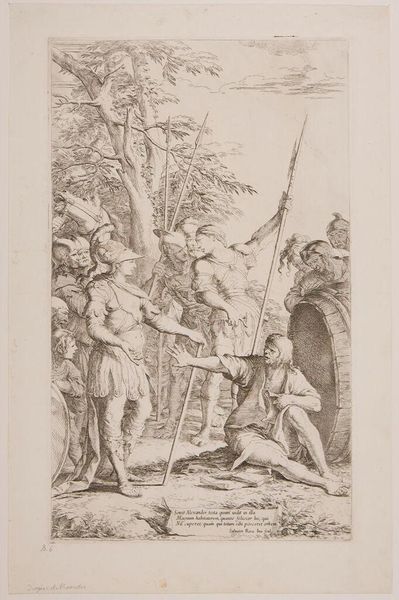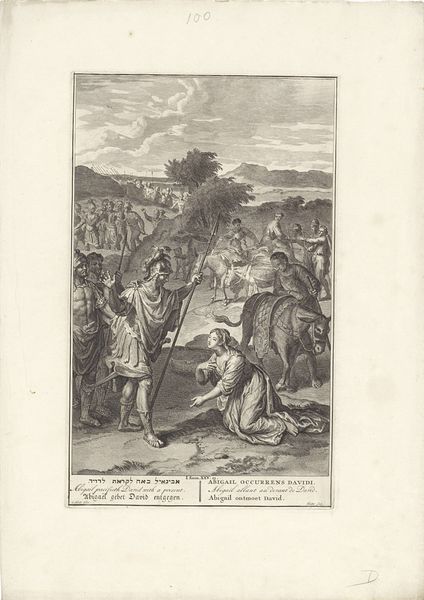
#
pencil drawn
#
aged paper
#
light pencil work
#
pencil sketch
#
light coloured
#
old engraving style
#
archive photography
#
personal sketchbook
#
old-timey
#
pencil work
Dimensions: height 214 mm, width 135 mm
Copyright: Rijks Museum: Open Domain
Curator: This is “Hannibal bij het hoofd van Hasdrubal,” created around 1795 by Ludwig Gottlieb Portman. The artwork, currently residing here at the Rijksmuseum, employs a light pencil technique on paper. What strikes you first about this piece? Editor: Definitely the theatrical drama of it all. There's a dark solemnity. A severed head in the foreground can't not grab your attention, can it? Curator: Indeed. Portman depicts a pivotal scene from the Second Punic War. Hannibal is shown supposedly recognizing the head of his brother, Hasdrubal, which was thrown into his camp by the Romans after Hasdrubal's defeat and death. What power dynamics can you detect? Editor: For me, there is an evident connection between the scene and larger questions about leadership and familial responsibility, maybe even guilt. I notice that Hannibal and his posse seem emotionally removed despite being surrounded by visible markers of carnage and violent male dominance. The socio-political message about Roman might is inescapable. It suggests that power, then and now, is often built on brutal realities. Curator: That's astute. Portman, though, worked at a time where heroic narratives and morality tales were incredibly popular; can we interpret this through such prism? The question arises as to whether it is more of a caution around warfare, particularly wars of expansion. Editor: I see what you mean, however the restrained classicism gives this sketch a veneer of authority. Perhaps that kind of restraint signals who Portman thinks his viewers were at the time: those with direct interest or investment in the theatre of military ambition. The emotional distance is perhaps more calculated. Curator: Possibly so. In assessing these portrayals of power then we need to be especially mindful of those perspectives which are missing in artwork and in many museum collections. We should always keep in mind of the role museums play to make sure a diversity of voices are present when interpreting moments of great upheaval like this. Editor: Absolutely. This pencil sketch serves as a powerful, if problematic, testament to how victory, defeat, and fraternity could be carefully manufactured in the social consciousness of Portman's time. Thanks for your reflections, that gave me more context.
Comments
No comments
Be the first to comment and join the conversation on the ultimate creative platform.
